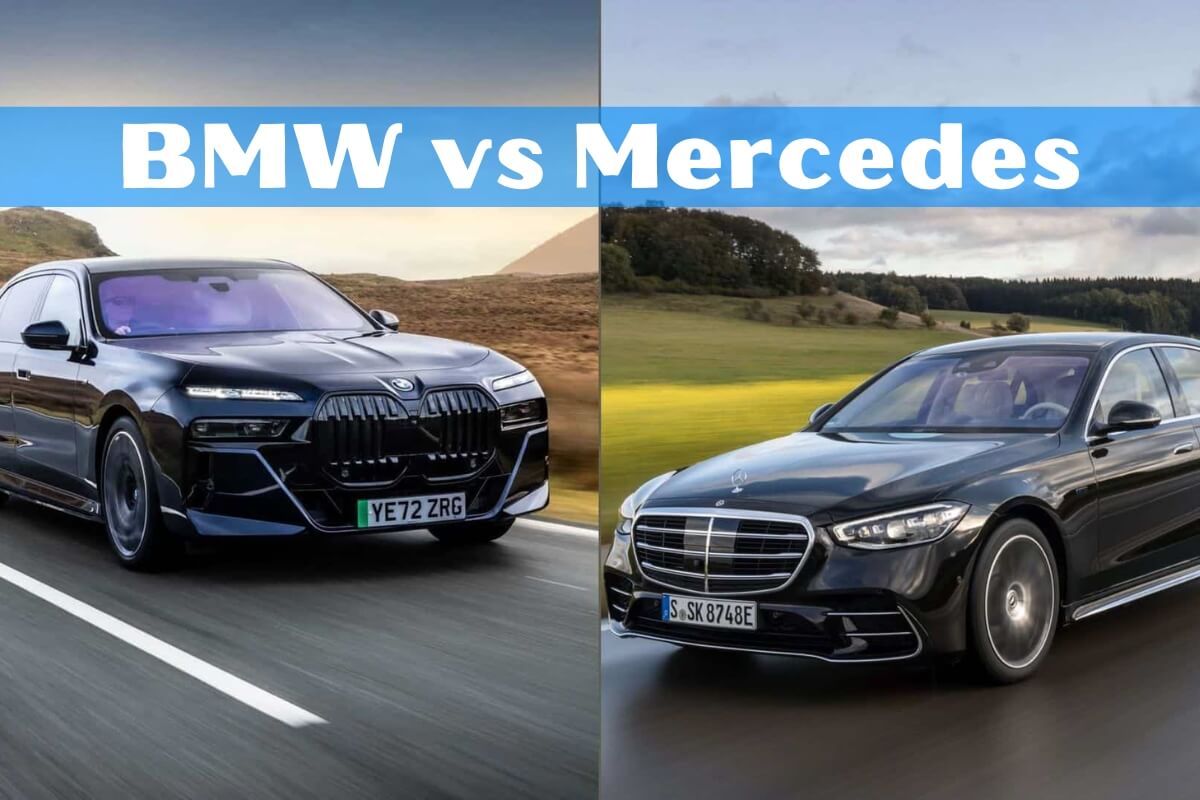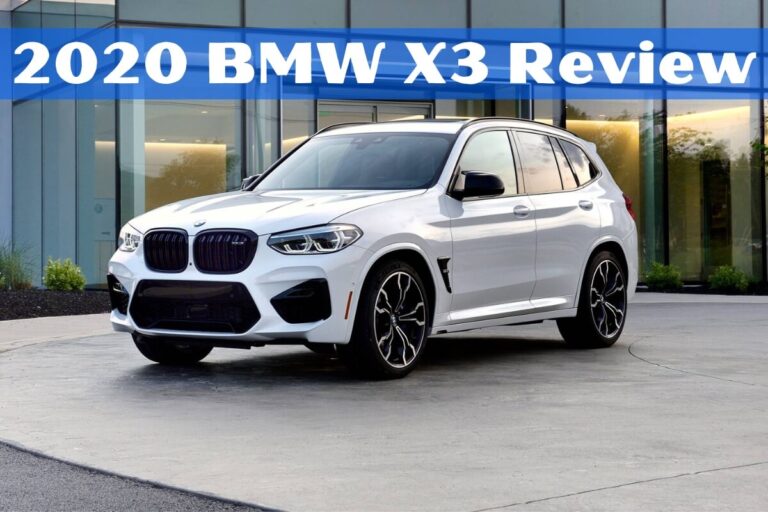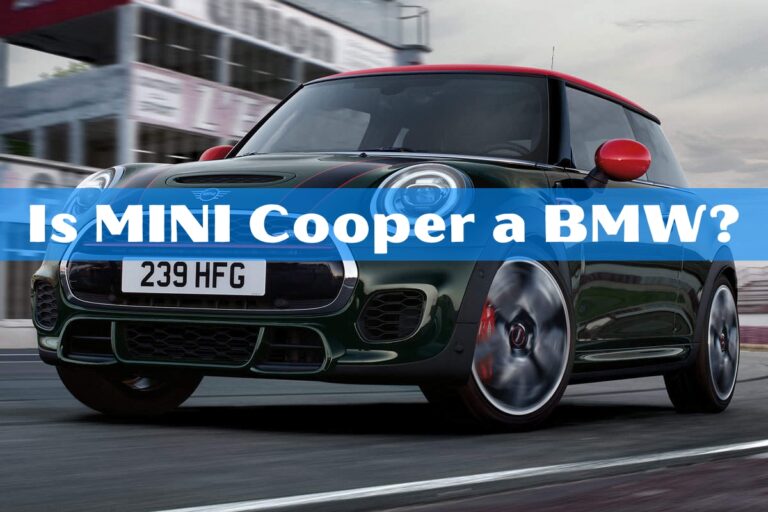BMW vs Mercedes: Ultimate Luxury Car Brand Comparison

When it comes to luxury vehicles, few names carry the same prestige and allure as BMW and Mercedes-Benz. These two German automakers have been locked in an intense rivalry for decades, pushing each other to new heights of performance, technology, and opulence. But which brand truly reigns supreme in the luxury car market? This in-depth comparison will evaluate BMW and Mercedes across all the key factors to help you decide which iconic marque is the better choice.
We’ll dive into their storied histories, dissect exterior and interior designs, analyze performance and driving dynamics, explore model lineups and features, and even look at ownership costs and brand perception. By the end, you’ll have a comprehensive understanding of how these automotive titans measure up, making it easier to pick the luxury car that best suits your lifestyle and preferences.
A Tale of Two Iconic Brands
Before we get into the nitty-gritty, let’s take a quick look at the origins and evolution of these fabled luxury marques.
BMW
(Bavarian Motor Works) was founded in 1916 as a manufacturer of aircraft engines. It wasn’t until 1928 that the company started building automobiles, rebranding the Dixi models it had acquired. From these humble beginnings, BMW rapidly established itself as a leader in sports and performance cars, introducing iconic models like the 2002 and the M3 that cemented its reputation as the maker of the “ultimate driving machines.”
Mercedes-Benz
has even deeper roots, tracing its lineage back to 1886 when Karl Benz patented the first gasoline-powered automobile. The company’s legacy is one of continuous innovation, producing the first four-wheeled car, the first crumple zones for passive safety, and the first production anti-lock braking system (ABS). Mercedes established an identity built on elegance, safety, and uncompromising luxury.
Today, BMW positions itself as the purveyor of high-performance luxury with a focus on exhilarating driving experiences. In contrast, Mercedes leans into its heritage of groundbreaking technology and opulent comfort, catering to discerning buyers who value refinement above all else. This philosophical divide sets the stage for our brand battle.
Exterior Design and Style
When it comes to exterior aesthetics, BMW and Mercedes each have a distinct design language that reflects their core brand values.
BMWs are sculpted with athletic, aggressive lines that exude a sporty and muscular stance. The iconic kidney grille and striking Hofmeister kink (that signature counter-curve at the bottom of the C-pillar) are recognizable BMW styling cues. Models like the 3 Series sport a low, wide profile that hints at the performance lurking beneath.
Mercedes takes a more elegant, understated approach. The styling is characterized by sweeping curves, crisp lines, and tasteful restraint. The tri-star emblem, upright hood ornament, and distinctive quad-headlamp design are unmistakable Mercedes hallmarks. Cars like the S-Class flagship exude a poised, stately presence that prioritizes sophistication over overt sportiness.
While subjective, one could argue that BMW designs skew more youthful and edgy compared to the timeless, classic aesthetics of Mercedes vehicles. But both marques undoubtedly turn heads with their respective takes on modern automotive styling.
Interior Luxury and Comfort
Of course, true luxury isn’t just skin deep. The interior experience is paramount, which is where both BMW and Mercedes bring their A-games in terms of craftsmanship, materials, and amenities.
BMWs are known for their impeccably designed cabins that meld cool, high-tech elements with premium soft-touch surfaces. The brand’s interiors achieve an ideal blend of sportiness and luxury, with body-hugging seats that keep you planted during spirited driving. User-friendly tech like the iDrive infotainment and available digital gauge clusters add to the experience.
Not to be outdone, Mercedes’ interiors are masterclasses in rich, supple leathers, genuine wood trims, and bank-vault levels of insulation that hush outside noise. The MBUX infotainment system leverages artificial intelligence for an intuitive user experience. And let’s not forget about the brand’s signature AIR-BODY CONTROL air suspension that delivers an ethereally smooth ride quality.
While BMW offers a slightly more driver-focused experience, Mercedes interiors veer more towards prioritizing passenger comfort. So if outright opulence is your priority, Mercedes may have a slight edge. But as with most things comparing these luxury titans, it’s a close call with both brands delivering impeccable cabin experiences.
Performance and Driving Dynamics
Now we come to an area where BMW flexes its “ultimate driving machine” credentials: outright performance and sharp driving dynamics.
BMWs are engineered from the ground up to deliver thrilling, visceral driving experiences. Excellent weight distribution, masterful chassis tuning, quick steering response, and sublimely balanced handling are hallmarks across the lineup. And powertrain options like the brutally powerful twin-turbo V8s in the M cars transform these luxury cruisers into genuine track weapons.
Mercedes does bring some serious firepower to this fight, though. AMG models like the thunderous E63 S sedan pack up to 603 horsepower and hit 60 mph in under 3 seconds. But while blisteringly quick on the straights, AMG tuning errs more towards everyday livability rather than the single-minded sports car ethos embraced by BMW’s M division.
Where Mercedes shines is in its ability to meld sportiness with exemplary comfort. The advanced AIR-BODY CONTROL suspension and cultured drivetrain calibrations deliver both driving pleasure and silky smoothness in equal measure. If you crave razor’s-edge handling, BMW may have the advantage. But for those seeking driving thrills balanced with supreme refinement, Mercedes hits that sweet spot.
Practicality and Spaciousness
While performance and luxury are paramount, one mustn’t overlook the practical side of vehicle ownership. So how do these premium marques stack up in terms of livability and day-to-day usefulness?
On the whole, Mercedes tends to offer slightly more spacious accommodations across its sedan and SUV lineups. Take the midsize E-Class and GLE models, for example – both provide more rear legroom and cargo capacity than their direct BMW rivals. This makes Mercedes a smarter pick for larger families or those who frequently haul passengers and gear.
That said, BMW counters with a diverse array of body styles like coupes, convertibles, and Sports Activity Vehicles, appealing to buyers who favor style and driving verve over maximum spaciousness. And lest we forget the brand’s impressive compact models like the X1 SUV, which deftly blend practicality and premium amenities in a tidy footprint.
Long story short: if you need maximum interior room and versatility, Mercedes has the edge here. But BMW brings clever packaging to the table as well, ensuring neither brand completely drops the ball in this important category.
Safety Ratings and Features
When it comes to safety, modern luxury cars like BMWs and Mercedes are fortresses on wheels packed with cutting-edge active and passive systems to protect occupants.
Both brands have slate of vehicles rated as Top Safety Picks by the Insurance Institute for Highway Safety (IIHS) and receive top marks in National Highway Traffic Safety Administration (NHTSA) crash tests. High-strength steel body structures, advanced airbag systems, and rigid safety cell construction are par for the course across their lineups.
On the active safety front, BMW and Mercedes models come loaded with technology like forward collision warning, automatic emergency braking, lane departure warning, and blind spot monitoring. More advanced features like night vision, cross-traffic alerts, and semi-autonomous driving assists are also available on higher-end trims.
While neither brand has a distinct lead in overall safety ratings, Mercedes does pack a few novel technologies not found on BMWs. Case in point: the innovative PRE-SAFE system can detect an imminent collision before impact, automatically tightening seatbelts and adjusting headrests to better protect occupants. And the brand’s new rear airbag deploys from the front seatbacks to cushion rear passengers.
So while you can’t go wrong in terms of overall safety regardless of which marque you choose, Mercedes’ inclusion of unique protective equipment gives it a slight edge in this category.
Model Lineup and Variety
Let’s complete this section on BMW and Mercedes’ diverse model lineups:
Part of the allure of luxury brands is the breadth of models and configurations on offer to satisfy every niche. And in this arena, BMW and Mercedes do not disappoint with dizzying arrays of sedans, coupes, convertibles, SUVs, and performance variants.
Let’s start with BMW’s portfolio: it runs the gamut from the compact 2 Series all the way up to the flagship 7 Series sedan and large X7 SUV. In between, you’ll find iconic nameplates like the 3 Series sport sedan, sleek 8 Series Grand Tourer, and the X5 midsize SUV that pioneered the SAV (Sports Activity Vehicle) segment. Not to mention ultra-high-performance M models infused with racing DNA.
Mercedes counters with an equally impressive roster spanning subcompact cars like the A-Class and CLA-Class up to the stately S-Class flagship sedan. The brand’s SUV range covers everything from the pint-sized GLA crossover to the massive, ultra-luxe G-Class. And let’s not forget the dream machines from AMG like the thundering GT sports car.
Both marques have also embraced electrification. BMW’s electrified “i” sub-brand includes the i3 city car and iX SUV, while Mercedes offers EQ-badged models headlined by the sleek EQS sedan and hip EQC crossover. Expect more and more all-electric offerings from each in the coming years.
With so many options across multiple vehicle segments and powertrains, neither BMW nor Mercedes suffers from a lack of variety. Whether you crave a compact runabout, a spacious family hauler, or an all-out performance machine, you’re virtually guaranteed to find something that fits the bill from these venerable luxury marques.
Reliability and Ownership Costs
For all their glamor and engineering prowess, BMWs and Mercedes are still complex machines—which can translate to headaches (and bigger repair bills) for owners down the road. So how do these two luxury titans stack up in terms of predicted reliability and overall ownership costs?
According to data from J.D. Power, BMW scores slightly above the industry average for predicted reliability across its lineup, while Mercedes falls a bit below average. However, issues like excess oil consumption in some turbo engines and premature wear of run-flat tires have dinged BMW’s reputation of late. Meanwhile, Mercedes has weathered complaints about troublesome infotainment systems.
When it comes to maintenance and upkeep, estimates suggest the average 10-year ownership costs for BMWs outstrip Mercedes models by roughly $5,000. This is likely due to BMW’s wider use of cutting-edge technologies coupled with costlier OEM parts and labor rates from certified dealers.
On the plus side, both brands maintain strong residual values on the used market thanks to their enduring brand cachet and enthusiast appeal. And while ownership costs may be higher compared to mainstream makes, it’s the price you pay for transcendent German engineering, luxury, and performance.
Brand Perception and Prestige
You simply can’t discuss luxury automakers without considering their brand image and perceptions of status. After all, for many buyers, a prestigious badge is just as important as the car itself.
In this regard, BMW and Mercedes have built reputations as the gold standards of luxury motoring, albeit slanted towards different philosophies. BMW’s brand positioning revolves around ideals of performance, precision, and “driving pleasure”—qualities that attract driving enthusiasts who value an exhilarating experience behind the wheel.
Mercedes-Benz, by contrast, has staked its claim as the quintessential purveyor of modern luxury and innovation. The brand cultivates an image of restrained elegance and sophistication meant to appeal to discerning buyers who prize comfort and refinement above all else. A Mercedes badge symbolizes you’ve arrived—both literally and figuratively.
Of course, brand loyalty and advocacy are fiercely divided amongst existing owners of both marques. Diehard BMW fans swear by the brand’s sporting character, while Mercedes devotees extol the unmatched luxury of their beloved Benzes. Luckily, these two automotive icons seem content to cater to their loyal followings.
At the end of the day, for those keeping score, both BMW and Mercedes rank among the world’s most prestigious and valuable luxury brands year after year. Picking between the two comes down to whether you value that elusive “Ultimate Driving Machine” or the embodiment of luxury itself.
Let’s Complete
After evaluating BMW and Mercedes across all the key areas that matter for luxury car buyers, one thing is clear: there is no definitive “winner.” Which brand reigns supreme comes down to your personal priorities and lifestyle.
If what you crave most is pure driving thrills and an engaging, involving experience behind the wheel, then BMW’s sporting DNA and performance-oriented offerings are tough to beat. From lightweight chassis designs to powerful turbo engines and telepathic steering, BMWs are engineered to delight driving enthusiasts.
However, if you place a higher premium on outright luxury, comfort, and innovative technologies, Mercedes claws its way back into the lead. The brand’s cabins are havens of insulation swathed in premium materials, while advanced suspension and technologies elevate riding refinement.
For households needing generous passenger and cargo space, Mercedes’ larger accommodations across many models also give it the nod on practicality. And for the tech-obsessed, both brands are at the cutting edge with their respective iDrive and MBUX infotainment systems.
Whichever luxury marque you choose, you’re getting a prestigious badge steeped in decades (if not centuries) of automotive heritage. But in the endless BMW vs Mercedes debate, the “best” pick has to be the one that best aligns with your personal definition of what makes a luxury vehicle truly luxurious.






